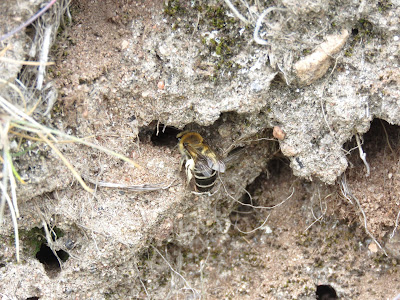Friday, August 14, 2020
Apart from three dunlin flying past at Badentarbat on a grey morning with a cool wind, birds were conspicuous by their absence; but tiny creatures provided some interest.
After snapping what I thought was a large fly on the sand at Achnahaird, I was surprised later to find that it was a sea slater - also known as a littoral woodlouse.
Back at the car park, I walked on towards the rocky cove where I've seen possible water shrew - although I was unlucky with that today. But a loud buzzing drew me to a moorland bank where bees were busy around many holes mined into the crumbly earth on two levels.
Given the attention the bees were giving to the heather, it seems reasonable to suppose these are heather colletes bees (C. succinctus) and this is an "aggregation" of nests (info from bwars.com).
As I drove away, the sun came out at last - so I parked by the plantation and walked through fragrant bog myrtle to the edge of the loch. A few black darter dragonflies were around; this is a female.
A furry hoverfly was only my second Volucella bombylans (plumata) - a bumblebee mimic. The separated eyes indicate that this is a female.
Birds seem thin on the ground (and in the air) at the moment, so I'm glad to have found an interest in other forms of wildlife. The hoverfly is fairly widespread and common but I'd never seen one until I came to Scotland. The heather colletes bee is also widespread; however, these apparently nest singly or in small numbers in southern England, which might explain why I've never noticed them before. It's mostly in northern England and Scotland that they nest in large aggregations (bwars.com).






